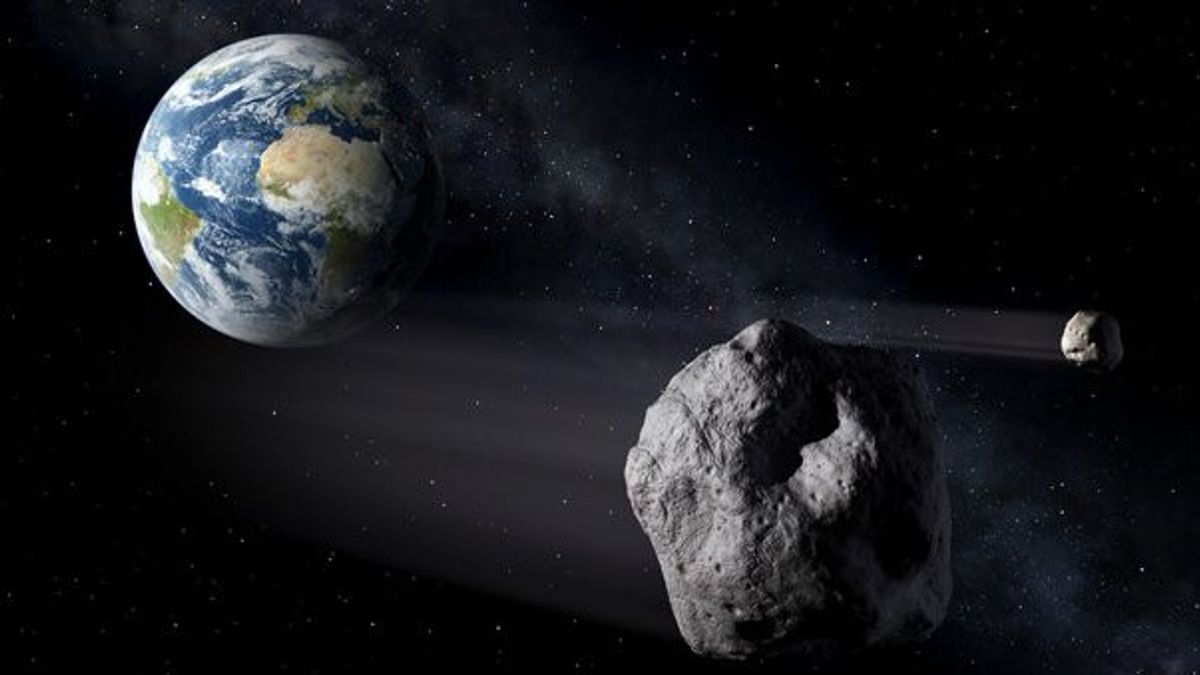JAKARTA - A giant asteroid dubbed the'planet killer' will pass very close to Earth, which could trigger dramatic climate change if it impacts our planet.
This space rock, named 2011 UL21, measuring the size of Mount Everest, makes it one of the largest 'dangerous potential' asteroids to pass near Earth in 125 years.
Asteroid 2011 UL21 is scheduled to approach Earth within four million miles on June 27, its closest approach in 110 years - the asteroid orbits the sun around every 1,130 days.
However, celestial observers may be able to see this space rock with adequate telescopes, especially on June 28 and 29 when the asteroid will appear the brightest.
The European Space Agency (ESA) shared in an announcement: "This asteroid is greater than 99 percent of all known near-Earth objects." However, this asteroid will not approach Earth that close. At its closest point on June 27, this asteroid will still be more than 17 times the Earth-Moon's distance.
This asteroid is scheduled to approach Earth again in 2089 when it will approach within 1.7 million miles of our planet.
The 2011 UL21 asteroid was documented by the Catalina Sky Survey project, a series of telescopes located in Arizona, on October 17, 2011. This asteroid is estimated to have a diameter of more than 7,500 feet.
"2011 UL21 is quite large and is included in the Apollo asteroid category," said the SETI Institute. "Namely in accordance with the Greek god Apollo, known for its epic journey, these asteroids come in various sizes from several meters to several kilometers, such as 2011 UL21. More importantly, Apollo asteroids approach Earth's orbit by crossing Earth's orbit, even though their orbits surround the Sun bigger than Earth."
Astronomers have been watching the 2011 UL21 closely for months, monitoring its path to ensure human safety on Earth.
SEE ALSO:
"Hazardous Potential Asteroids (PHAs) are the exact formal definition, referring to small planets larger than about 460 feet that can approach within 4.6 million miles of Earth", said Gianluca Masi, astrophysicist and scientific director of the Virtual Telescope Project, which will host live broadcasts for the event.
"In other words, only the largest asteroids are able to get close enough to our planet being labeled as PHAs, which doesn't mean they will hit Earth, but still require better monitoring."
2011 UL21 is also categorized as a'planet killer,' defined as an asteroid capable of causing damage on a continental scale and producing enough debris as it impacts that could trigger significant climate change.
Scientists at the Massachusetts Institute of Technology revealed in 2023 that asteroids in that category will not have an impact on Earth for at least the next 1,000 years.
The English, Chinese, Japanese, Arabic, and French versions are automatically generated by the AI. So there may still be inaccuracies in translating, please always see Indonesian as our main language. (system supported by DigitalSiber.id)


















